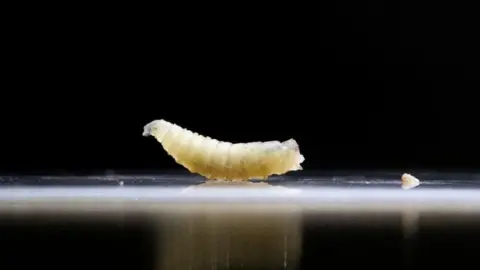The number of animals infested with New World screwworm (NWS), a flesh-eating parasite, has risen by 53% in the four weeks to mid-August, according to data released by the Mexican government.
While infestations by the fly larvae predominantly affect cattle, officials have also noted cases in dogs, horses, sheep, and even humans. Reports suggest numerous individuals have sought treatment at hospitals in southern states like Campeche and Chiapas.
This spike in infestations in Mexico follows the recent confirmation of the first human case of screwworm infection in the U.S., involving a patient returning from El Salvador.
Historically, NWS was declared eradicated in the United States in 1966 after the release of sterile male flies disrupted the reproductive cycle of the species, and Mexico achieved similar success in 1991. However, the parasite remains a common threat in tropical and subtropical areas of Central and South America. The first new case in Mexico since its prior eradication was reported in November 2024.
Female New World screwworm flies (Cochliomyia hominivorax) lay eggs in or near open wounds on warm-blooded animals and are also attracted to mucous membranes. The hatching larvae burrow into the tissues, causing a condition known as myiasis. If left untreated, this infestation can lead to severe damage and may be fatal as the larvae consume living tissue.
While fatal cases in humans are rare, individuals with existing health issues and the elderly should exercise particular caution. An 86-year-old woman in Campeche state reportedly died from complications related to an infestation of screwworm larvae exacerbating her skin cancer.
People working with livestock or residing in rural areas where infested animals are present face the highest risk of infection. The U.S. Centers for Disease Control and Prevention (CDC) is urging those who have visited regions where screwworms are known to be present to remain vigilant for symptoms, including unexplained skin lesions and the presence of larvae in wounds.
Preventive measures including keeping wounds clean, covered, and using insect repellent are critical in affected regions. Anyone suspecting an infestation is encouraged to seek medical assistance promptly.



















